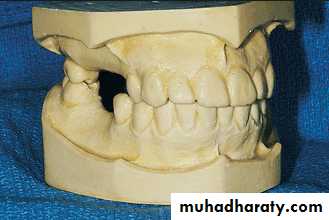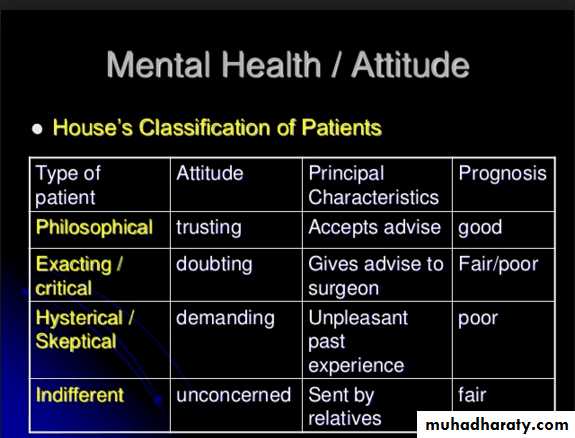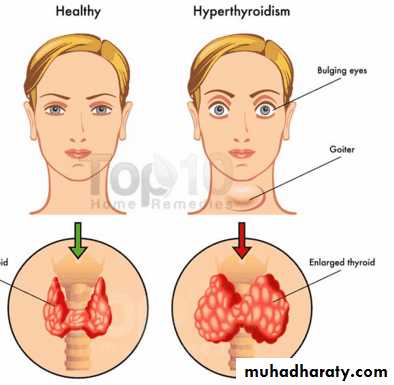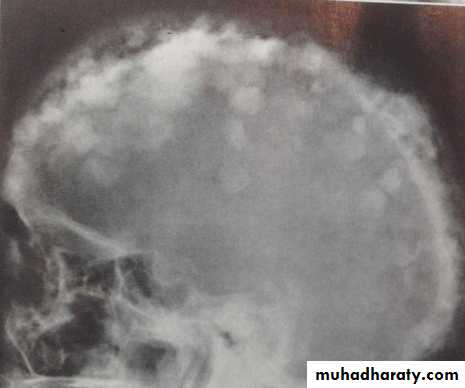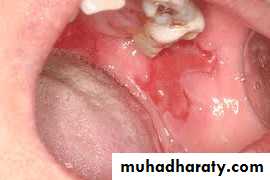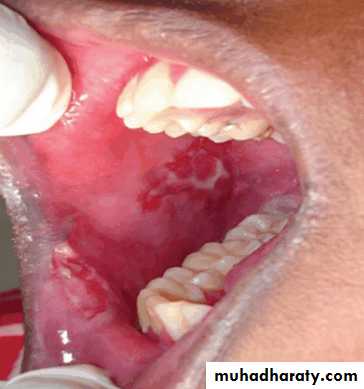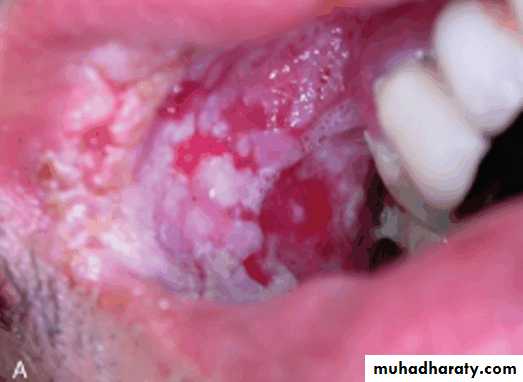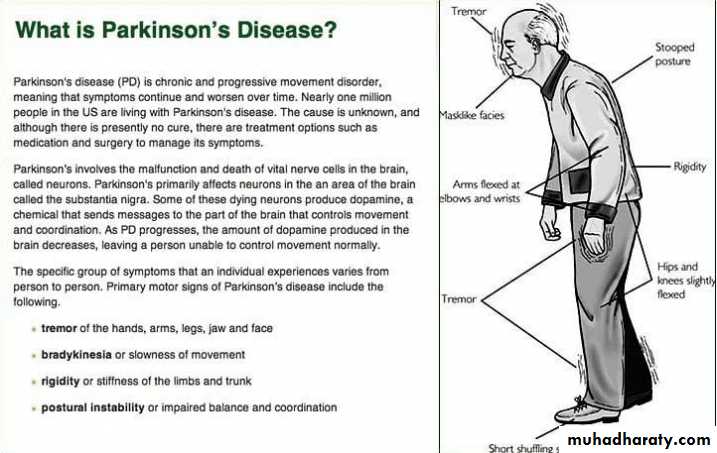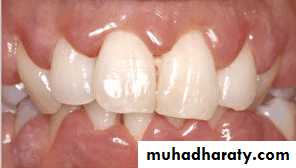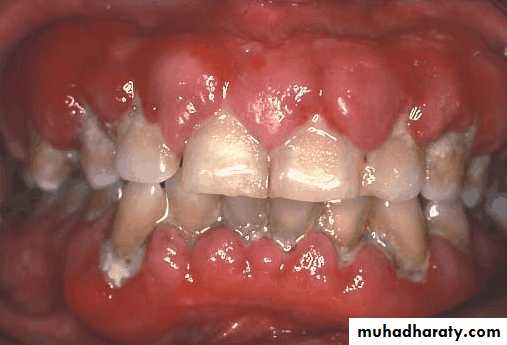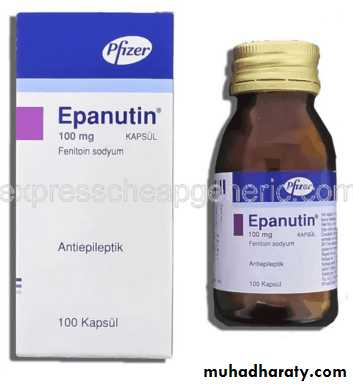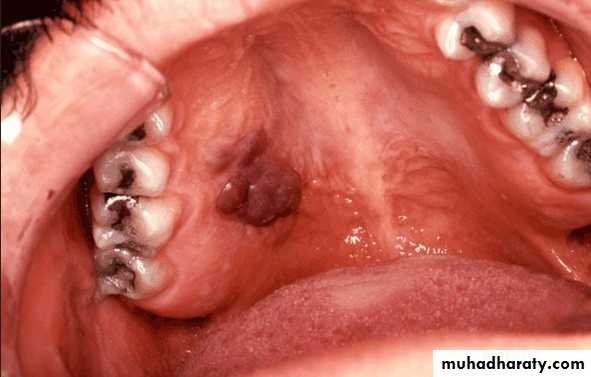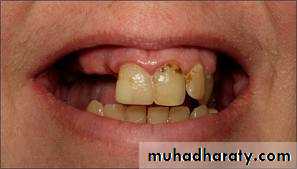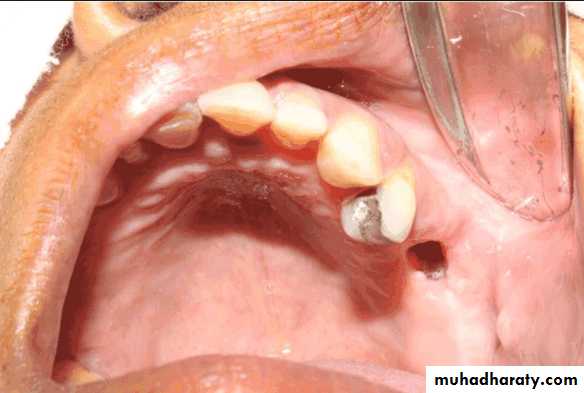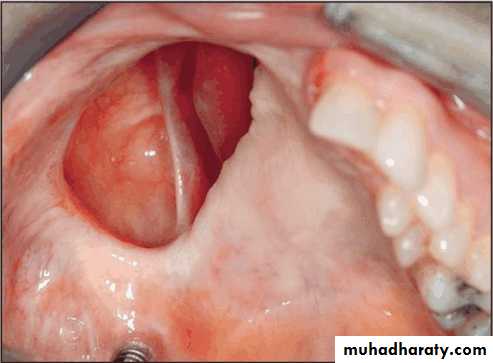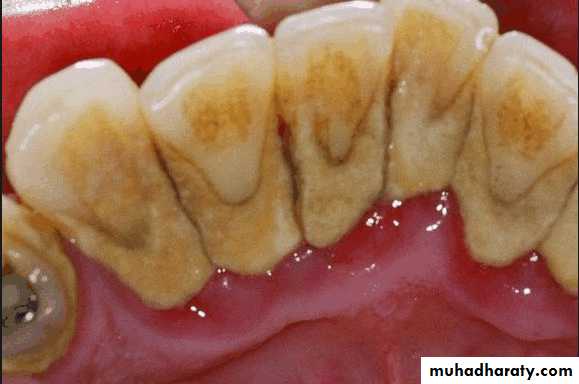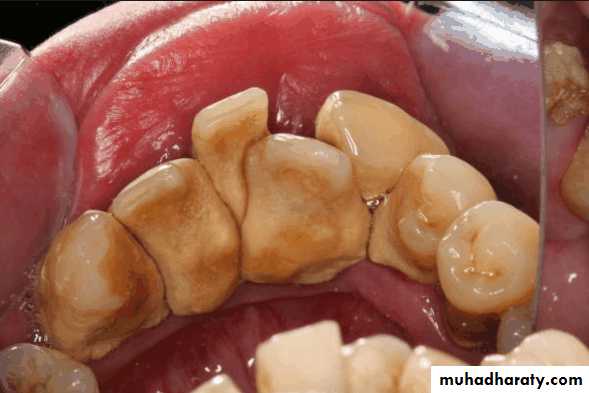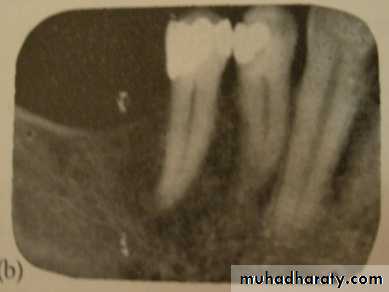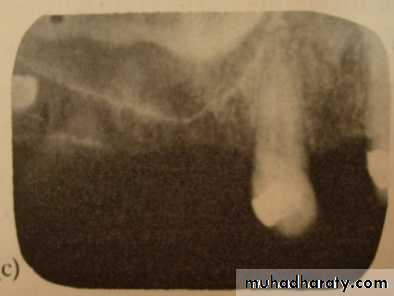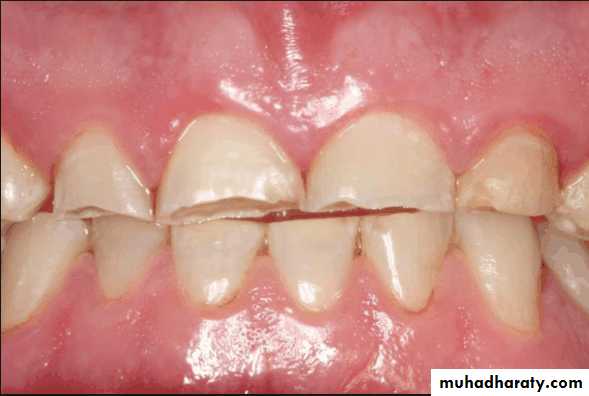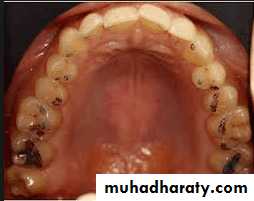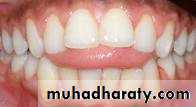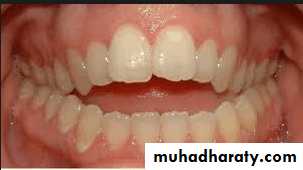Diagnosis and Treatment Planning - Removable Partial DenturePart-1
Assis.Prof.Radhwan Himmadi HasanB.D.S. , M.Sc. , Ph.D.
2018
LEC 1
Dr.Radhwan Himmadi Hasan
2/18/2018
1
For any disease or condition to be treated, it is very important to know the background and forms of the disease itself, so that it can be identified in the various patterns that it presents and the necessary treatment be instituted. So, an accurate diagnosis is important.
Many failure in removable partial denture treatment can be traced to inadequate diagnosis and incomplete treatment planning.
Therefore, a thorough, properly sequenced treatment plan is essential to successful removable partial denture therapy.
Dr.Radhwan Himmadi Hasan
2/18/20182
• The restoration of partially edentulous mouth presents the challenge to re-establish masticatory efficiency, esthetics and comfort.
• As the remaining teeth and edentulous ridges have to sustain greater stress than that intended by nature, the preservation of these tissues is one of the primary objectives.
•
Before any rehabilitation procedures are attempted, patient information must be gathered to provide the evidence necessary to arrive at an accurate diagnosis and develop a treatment plan.
Dr.Radhwan Himmadi Hasan
2/18/2018
3
• The examination can be completed most effectively and expeditiously if two appointments are used.
• In the first appointment the patient fills out a health questionnaire and is interviewed.
• A cursory examination of the oral cavity is made to identify any condition that requires immediate attention.
• Oral prophylaxis is accomplished; a radiographic survey is completed.
• Accurate diagnostic impressions and casts are made.
Organizing the diagnostic examination
Dr.Radhwan Himmadi Hasan
2/18/2018
4
• The second appointment includes
• Mounting of The diagnostic casts ,• A definitive examination of the oral cavity,
• Interpretation of radiographs & correlated with the clinical findings,
• Arrangements are made for any needed consultation with a medical or dental specialist,
• The diagnostic data are analyzed and a definitive treatment plan is formulated.
Dr.Radhwan Himmadi Hasan
2/18/2018
5
Objective: To assess the patients general health.
It should be inclusive enough to provide information concerning any systemic condition that may affect the prognosis of the treatment.Health questionnaire
Dr.Radhwan Himmadi Hasan
2/18/2018
6
Objectives:
1. To Establish Rapport with the patientIn 1961, Dr M. M. Devan stated, “ We should meet the mind of the patient before we meet the mouth of the patient.”
2. To Gain Insight Into The Psychologic Makeup of the patient (Philosophical, Exacting, Hysterical, Indifferent)
Patient interview
Dr.Radhwan Himmadi Hasan
2/18/20187
Dr.Radhwan Himmadi Hasan
2/18/2018
8
• 3. To Ascertain The Patients Expectations of treatment.
• 4. Explore Any Physical Problems that may affect the treatment .• Any positive responses in the health questionnaire must be explored in detail and evaluated.
• When any doubt exists, the most prudent action is to seek a medical consultation before initiation of the dental treatment.
•
Dr.Radhwan Himmadi Hasan
2/18/20189
• The fourth objective of the interview - determine whether they are realistic in the light of oral and physical conditions.
• Any partial denture will complicate oral hygiene procedures, occupy space in the oral cavity, necessitate a learning and adaptation period.
• If these inconveniences are not acceptable, chances for successful treatment are limited.
Ascertaining the patients expectations of treatment
Dr.Radhwan Himmadi Hasan
2/18/2018
10
Valuable information may be gained from
many patients by simply allowing them to talk.The patients opinion of the dentists, past dental treatment, their fears, their health, expectations of treatment may be learned by asking few general questions.
Phrasing of questions
Open-ended questionsDr.Radhwan Himmadi Hasan
2/18/201811
• Dentist's attitude and behavior:
• The patient who perceives the dentist as caring, understanding, and respectful is more likely to be honest and co-operative.• The dentist should make eye contact with the patient, looking directly at the patient and displaying complete attention rather than studying radiographs or writing.
Aids for successful interview
Dr.Radhwan Himmadi Hasan
2/18/2018
12
• The dentist should maintain a relaxed and attentive physical posture.
• The dentist should employ head nodding, verbal following, and verbal reflection.Dr.Radhwan Himmadi Hasan
2/18/201813
Personnel protection:
Disposable gloves, face masks, protective eye wear, immunizationEnvironmental surface and equipment cleaning and disinfection
Shield surface from direct or indirect exposure – plastic wrapInfection control
Dr.Radhwan Himmadi Hasan2/18/2018
14
Instrument sterilization
Heat sterilization – if possible,
Clean with hot water and soap or by an ultra sonic cleaner dry, wrap, package and heat sterilization
Reusable item that can not be sterilized – use ethylene oxide
Prosthodontic clinical protocol
Impression traysClean (detergent – alcohol) Sterilize Store
Instruments, articulators, custom trays
2 min application of Sodium hypochloriteDr.Radhwan Himmadi Hasan
2/18/201815
Disinfecting impressions
Spray with sodium hypochlorite solution loosely wrap in plastic for minimum 2 min.Pour within 12 min
Denture asepsis
Concentrated Sodium hypochlorite solutionDr.Radhwan Himmadi Hasan
2/18/2018
16
• Medical History
Dr.Radhwan Himmadi Hasan
2/18/2018
17
• DIABETES :
• Uncontrolled diabetes - accompanied by multiple small oral abscesses and poor tissue tone.• The disease should be brought under control before Prosthodontic treatment is accomplished.
• The decreased resistance to infection - special care during treatment and follow-up.
• Reduced salivary output – significantly reduces the ability of a patient to wear the prosthesis with comfort and increases the possibility for occurrence of caries.
SYSTEMIC DISTURBANCES THAT CAN HAVE SIGNIFICANT EFFECT ON THE TREATMENT
Dr.Radhwan Himmadi Hasan
2/18/201818
HYPERPARATHYRODISM
The patient is likely to suffer rapid destruction of the alveolar bone as well as generalized osteoporosis.
The dental radiographs typically show a complete or partial loss of lamina dura.
Such a patient is poor risk for partial denture therapy.
Dr.Radhwan Himmadi Hasan
2/18/201819
HYPERTHYROIDISM
Individual may show no oral symptoms other than early loss of the deciduous teeth followed by an accelerated eruption of the permanent teeth.Mainly poor risks for prosthodontic therapy.
Dr.Radhwan Himmadi Hasan
2/18/201820
• ARTHRITIS
• If arthritic changes occur in the temporomandibular joint, the making of jaw relation records can be difficult, and changes in the occlusion may occur.• PAGET'S DISEASE:
• Patients with Paget's disease may have enlargement of the maxillary tuberosities, which can cause changes in the fit and occlusion of the prosthesis
• Frequent recall program should be instituted for such patients.
•
Dr.Radhwan Himmadi Hasan
2/18/201821
• ACROMEGALY :
• Enlargement of the mandible
• They should be observed frequently to evaluate the fit and occlusion of the prosthesis.
• PEMPHIGUS VULGARIS
• Formation of bullae in the oral cavity with gradual spreading to the skin.
• Care must be taken to establish smooth and well polished contours and borders of the prosthesis .
• Greater than normal post- insertion care can be anticipated.
•
Dr.Radhwan Himmadi Hasan
2/18/201822
• PARKINSON'S DISEASE :
• Rhythmic contractions of the musculature, including muscles of mastication.
• If the symptoms are severe it is difficult to insert and remove the partial denture.
• Impression procedures are also compromised by the presence of an excessive quantity of saliva.
Dr.Radhwan Himmadi Hasan
2/18/201823
• EPILEPSY
• A grand mal seizure may result in fracture and aspiration of the prosthesis , and possibly the loss of additional teeth.• Consultation with the patients physician is essential before treatment is initiated.
• Construction of removable partial denture is usually contraindicated if the patient has frequent , severe seizures with little or no warning.
•
Dr.Radhwan Himmadi Hasan
2/18/2018
24
All the materials used must be radio opaque
If the patients medication includes Dilantin(phenytoin sodium) ,one must take care to ensure that the removable prosthesis does not irritate the gingival tissues, (hypertrophy of these tissues may result.)Dr.Radhwan Himmadi Hasan
2/18/2018
25
• CARDIOVASCULAR DISEASES
• Patients with the following require medical consultation before any dental procedures• Acute or recent myocardial infarction
• Unstable or recent onset of angina pectoris
• Congestive heart failure
• Uncontrolled arrhythmia
• Uncontrolled hypertension
• The patients physician should be consulted and written approval should be obtained before any dental treatment is initiated.
•
Dr.Radhwan Himmadi Hasan
2/18/201826
• Prophylactic antibiotic coverage is always recommended if surgical procedures are to be accomplished for patients with a history of
• Congenital or rheumatic heart disease
• Cardiac murmurs or repeated contraction of aorta
• When lesser degree of tissue trauma are anticipated, such as placement of restorations, making impressions – many physicians do not recommend antibiotic prophylaxis
•
Dr.Radhwan Himmadi Hasan
2/18/201827
• CANCER
• Oral complications are also common side effect of radiation and chemotherapy for malignancies in areas other than the head and neck.• Mucosal irritations
• Xerostomia
• Bacterial and fungal infections
• These symptoms will complicate the construction and wear of the removable partial denture.
• Studies has been shown that 40% of all patients treated with chemotherapy and radiotherapy for malignancies remote from the oral cavity developed some form of oral complication.
Dr.Radhwan Himmadi Hasan
2/18/201828
• Transmissible diseases
• Hepatitis, Influenza, Tuberculosis, HIV• May be transmitted by contact with patient blood, saliva, contaminated dental instruments, and aerosol from the hand piece.
• Make sure impressions are disinfected
Dr.Radhwan Himmadi Hasan
2/18/2018
29
• Some of the frequently prescribed drugs that can affect Prosthodontic treatment are
• Antihypertensive drugs:• Most common side effect is orthostatic, or postural hypotension which may result in syncope when the patient suddenly assumes upright position.
• Therefore care must be taken when the patient gets up from the dental chair.
• Diuretic agents prescribed for hypertension patients leads to decrease in saliva, and dry mouth
Evaluating effect of drugs on treatment
Dr.Radhwan Himmadi Hasan
2/18/2018
30
Anti coagulants:
Post surgical bleeding could be a problemThese patients should be referred to an oral surgeon for management of the surgical phase of the treatment.
Endocrine therapy:
May develop an extremely sore mouthDr.Radhwan Himmadi Hasan
2/18/2018
31
• Saliva inhibiting drugs
• Banthine, atropine which are used to control excessive salivary secretion are contraindicated in patients with cardiac disease because of their vagolitic effect.• Other contraindications are prostatic hypertrophy, and glaucoma.
• Saliva should be controlled by mechanical means in these patients.
Dr.Radhwan Himmadi Hasan
2/18/2018
32
Structure of the interview
• How did he/she lose his/her teeth? Caries? Periodontal?Gather information about existing dentures. (reason for dissatisfaction)
Dental History
Dr.Radhwan Himmadi Hasan2/18/2018
33
• Presence of large number of restored teeth, signs of recurrent caries, the evidence of decalcification – susceptible to caries
• Unless an exceptional level of plaque control can be achieved, the prognosis for the treatment is poor.
• The placement of crowns on the abutment teeth may be indicated if the patient is highly susceptible to caries.
Evaluation of caries susceptibility
Dr.Radhwan Himmadi Hasan
2/18/2018
34
Palate and posterior ridge are dried with air, any dimples or craters should be carefully inspected.
Paper or gutta-percha points can be used to probe the area.
Before diagnostic impressions are made, any communication should be closed with gauge tied to dental floss.Detection of oral- antral and oral- nasal communications
Dr.Radhwan Himmadi Hasan
2/18/201835
Oral prophylaxis
Supra gingival calculus should be removed and oral prophylaxis should be performed if these procedures have not been performed recently.
The diagnostic casts and the definitive intra oral examination will be more accurate if the teeth are clean.
Dr.Radhwan Himmadi Hasan
2/18/201836
• Radiographs
• A complete series of periapical and bitewing radiographs is essential for complete examination.• Panoramic radiographs are ideal for screening for pathologic conditions.
• Excellent periapical radiographs are essential for determining the crown/ root ratio of the remaining teeth, the status of periodontal ligament space, and lamina dura, quality of ridge in the edentulous areas.
Dr.Radhwan Himmadi Hasan
2/18/201837
Diet
• Frequent usage of mints, soft drinks, sugar-containing products, a change must be affected.• The problems caused by sugar are compounded by the wear of removable partial denture because the denture shields the micro organisms from the cleansing and buffering action of patient’s saliva.
Dr.Radhwan Himmadi Hasan
2/18/2018
38
• Evaluated to determine their effect on prognosis
• Bruxism and clenching:• Bruxism is often initiated by interceptive occlusal contacts
• The occlusion should be analyzed to determine any correction is indicated, if the efforts are unsuccessful the patient should wear occlusal splint to protect the remaining teeth.
Habits
Dr.Radhwan Himmadi Hasan
2/18/201839
• Tongue thrusting:
• Could cause extensive stress on the teeth retaining and supporting the partial denture.• Eliminate the habit before fabrication of the prosthesis, if it persists the partial denture should be designed to distribute the forces to as many teeth and supporting structures as possible.
Dr.Radhwan Himmadi Hasan
2/18/201840
Asking whether the patient has any questions is a good way to terminate the interview, and it allows the patient to open any new subject or to add to any previous areas that have been discussed.
Questions from the patient:
Dr.Radhwan Himmadi Hasan
2/18/2018
41
• Problems requiring immediate attention:
• Large carious lesions: excavation, temporary restorations• Ill-fitting dentures: adjustment or temporary relining to eliminate discomfort & allow recovery of the damaged tissues.
• Evaluation of oral hygiene:
• Inadequate oral hygiene must be recognized
• Preventive dentistry programs are initiated
• The ultimate success of the treatment depends on home care of the patient, technical procedures provided by the dentist.
Initial Examination
Dr.Radhwan Himmadi Hasan
2/18/2018
42
It is the dentists responsibility to explain to the patient
The signs and symptoms of dental disease,The equipment and techniques for proper home care,
The patients responsibilities in preventing further dental disease, and their importance for the long-term success of the treatment.
Dr.Radhwan Himmadi Hasan
2/18/201843
Indications for fixed restorations
Tooth bounded edentulous regions:Any edentulous space (short span) bounded by teeth suitable for use as abutments should be restored with a fixed partial denture.
Additional modification spaces in Class III modification 1 situation:
Class III arch is better supported and stabilized when a modification area on the opposite side of the arch is present.
DIFFERENTIAL DIAGNOSIS : FIXED OR REMOVABLE PARTIAL DENTURES
Dr.Radhwan Himmadi Hasan
2/18/2018
44
Indications for removable partial dentures
Although a removable partial denture should be considered only when a fixed restoration is contraindicated, there are several specific indications for the use of a removable restoration.Long span:
A long edentulous span would have abutment teeth which cannot bear the trauma of horizontal and diagonal occlusal forces.
Also because of ridge resorption, the pontics may have to be placed in extreme labial inclination for lip support.
Dr.Radhwan Himmadi Hasan
2/18/2018
45
In such cases a removable partial denture which provides favorable esthetics and cross arch stabilization is indicated.
Need for effect of bilateral stabilization:
In a mouth weakened by periodontal disease, a fixed restoration may jeopardize the future of involved abutment teeth.The removable partial denture on the other hand may act as a periodontal splint through its effective cross-arch stabilization of teeth weakened by periodontal disease.
Excessive loss of bone in posterior area.
Dr.Radhwan Himmadi Hasan2/18/2018
46
Chromium – cobalt alloy :
Low density (weight)
High modulus of elasticity (stiffness)Low material cost
Resistance to tarnish
Dr.Radhwan Himmadi Hasan
2/18/201847
Comparative physical properties
Yield strength is the greatest amount of stress an alloy will withstand and still return to its original shape in an unweakened condition.Thus dentist must design chromium – cobalt framework so that the degree of deformation expected in a direct retainer is less than comparable degree of deformation for gold component.
Density
Modulus of elasticityYield strength
Tarnish resistance
Cost
Hardness
Chromium-Cobalt
Low
High
Low
Good
Low
High
Gold
High
Low
High
Good
High
Mod
Titanium
Low
Low
Low
Good
Mod-high
High
Dr.Radhwan Himmadi Hasan
2/18/2018
48


